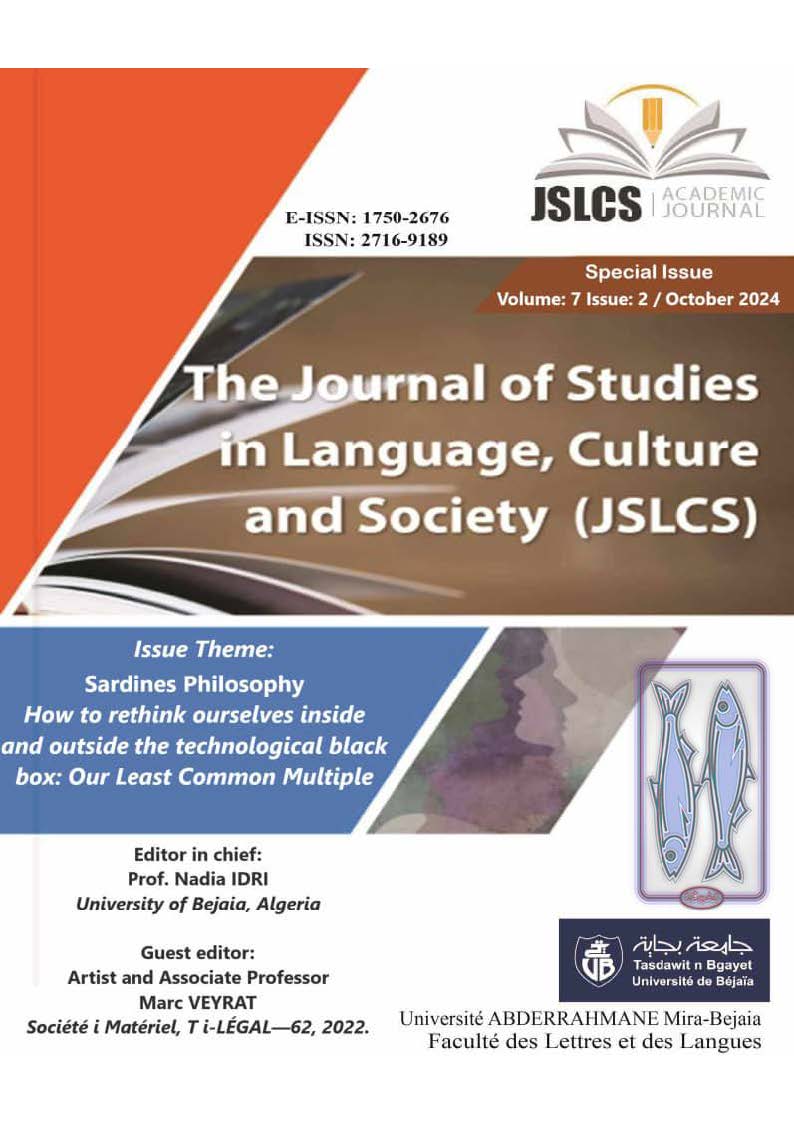The Sardine In The Network: Metaphorical Analysis Of Connectivity And Saturation Dynamics In Digital Ecosystems
Keywords:
Connectivity, Digital Networks, Historical Evolution, Network Congestion, Sardine MetaphorAbstract
The purpose of this study is to explore the sardine metaphor in describing digital networks and analyze its effectiveness in explaining congestion and connectivity in modern computer systems. The research question focuses on how this metaphor can simplify the understanding of the network overload problem and make a complex concept more understandable to nonexperts. The research methodology includes a historical review of the sardine metaphor, followed by an examination of case studies in which this metaphor has been used in scientific and technical outreach contexts. The research instrument was a qualitative analysis of the metaphor's application context and a critical evaluation of its strengths and limitations. The results show that the sardine metaphor effectively simplifies the understanding of the network congestion problem and makes complex concepts understandable to nonspecialists. However, certain limitations have been identified, particularly regarding the accuracy and evolution of digital technology. The study concludes that, while the sardine metaphor is useful in some contexts, it requires continuous adaptation to remain relevant in the context of rapid advances in digital technology. This study suggests directions for future research, including the development of new metaphors that could provide new perspectives for communicating technological issues.
References
Adams, R., & Brown, T. (2024). Understanding digital infrastructure: Simplified models andmetaphors. Cambridge University Press.
Anderson, P. (2022). Blockchain: The architecture of trust and transparency. MITPress. https://doi.org/10.7551/mitpress/11234.001.0001
Aschauer, G., Kouroupetroglou, E., & Isaksson, E. (2021). Metaphors in technical communication. Routledge.
Brown, J. (2022). Visual metaphors and digital communication. Oxford University Press.
Casado, A., Pérez, M., & Hernández, J. (2023). Saturation and visibility in social media networks: A sardine can analogy. Digital Media Studies, 15(2), 108–124.
Castells, M. (2010). The rise of the network society. Wiley-Blackwell. https://doi.org/10.1002/9781444319514
Dijksterhuis, A. (2020). Metaphors in science communication: A cognitive approach. Routledge.
Dupont, A., & Lemaire, B. (2022). Symbolisme et traditions culinaires en Méditerranée. Éditions du Sud.
Eagleton, T. (2015). How to read literature. Yale University Press. https://doi.org/10.12987/9780300205304
Foucault, M. (2002). The archaeology of knowledge. Routledge. https://doi.org/10.4324/9780203996650
Garcia, L. (2022). The Internet of things and network fluidity. Digital Wave Publications.
Glucksberg, S. (2001). Understanding figurative language: From metaphors to idioms. Oxford University Press. https://doi.org/10.1093/acprof/9780195111095.001.0001
Hampton, K. N. (2011). Internet use and the social network: An analysis of internet useandits relationship to social network participation. In J. L. Katz (Ed.), The social media reader (pp. 200–216). NYU Press.
Harrington, M. (2021). La sardine à travers les âges: Histoire et économie. Maritime Publications. Johnson, B., & Lee, C. (2023). Innovative pedagogical strategies for digital literacy. Education Press.
Jones, A., & Brown, C. (2021). The dynamics of digital networks: A metaphorical approach. Cambridge University Press.
Kövecses, Z. (2010). Metaphor: A practical introduction. Oxford University Press. https://doi.org/10.1093/acprof/9780195374940.001.0001
Kumar, R. (2021). Mesh networks and decentralized architectures. Global Tech Insights. Leclerc, J. (2023). Cuisine bretonne et identité régionale. Bretagne Éditions.
Lee, J., Patel, S., & Wong, K. (2023). Educational tools for digital literacy: Using metaphorsto enhance learning. Oxford University Press.
Lee, R. (2020). Eco-friendly digital technologies. Green Future Publishing.
Lewis, R., Davis, K., & Wang, X. (2023). The structure of online interactions: A comparative analysis with marine biology. Digital Communication Research, 18(1), 110–125.
Lopez, M. (2021). Social networks and community building. Social Media Insights.
Martin, P., & Wright, T. (2024). La sardine comme métaphore: Urbanisation et culture populaire. Urban Culture Press.
Martinez, A., & Zhang, H. (2023). Network management and resource allocation: Visual metaphors in practice. Wiley.
Miller, S. (2020). Sustainable digital ecosystems. Green Tech Publishing. Papacharissi, Z. (2010). A private sphere: Democracy in a digital age. Polity Press.
Parker, J. (2020). Streaming services and consumer engagement. Media Trends.
Smith, A. (2023). AI and network evolution: A new era of connectivity. TechFuture Press.
Smith, R. (2021). Navigating information overload: Insights from the sardine metaphor. International Review of Information Science, 12(4), 60–75.
Thomas, J., Smith, L., & Johnson, P. (2022). Data in motion: The compact nature of digital information. International Journal of Digital Studies, 20(4), 75–90.
Thompson, J. (2023). Navigating mixed reality: The future of immersive networks. Immersive World Publishing.
White, P. (2020). Explaining network dynamics: The role of metaphors in scientific communication. Science Communication, 42(4), 78–95. https://doi.org/10.1177/1075547020921789
Williams, D. (2021). Cybersecurity and collective defense mechanisms. Secure Tech Publishing.
Williams, R., & Patel, M. (2022). Future directions in digital metaphor research. Springer.
Wilson, R. (2023). Networks and connectivity: The sardine metaphor in modern communication. Network Theory Publications.
Zhang, Y., & Yang, H. (2021). Big data management and the sardine metaphor: Acomparative study. Data Science and Analytics, 18(4), 90–102.








